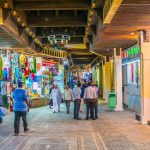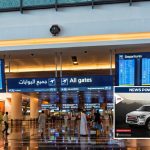MUSCAT: Reinforcing its commitment to Oman’s Vision 2040 and the national drive toward a low-carbon, resource-efficient economy, BankDhofar — the Sultanate’s largest bank by network size — is taking proactive steps to advance sustainability both through its financing portfolio and within its own operations.
Through an expanding suite of sustainability-linked and green financing solutions, BankDhofar enables businesses, developers, and institutions to invest confidently in energy-efficient construction, retrofitting, and renewable energy technologies. These instruments not only promote compliance with green building standards but also help organizations future-proof assets, reduce long-term operational costs, and align with global environmental benchmarks.
Yet BankDhofar’s leadership in sustainability goes well beyond its lending portfolio. The Bank recognizes that meaningful change begins within — by embedding the same principles it advocates across its own premises, processes, and people. As an office-based institution with a relatively modest emissions footprint, BankDhofar nonetheless places strong emphasis on energy efficiency, responsible resource management, and data-driven performance improvement.
Read More
- Gold slips for fourth day as strong Dollar dampens rate-cut hopes
- Bank Muscat : A successful journey in advancing sustainable economic and social development and empowering Omani talent
- Registration opens for Oman’s Digital Excellence Award in the Government Sector 2025
- Minerals Development Oman partners with JSW for RO 204 million South Minerals Project
- Oman’s OQEP reports RO 633.8 million revenue during first 9 months of 2025
A standout example of this commitment is the Bank’s LED Lighting Conversion Programme, a multi-phase initiative designed to boost the energy performance of its facilities. In Phase I, the Bank replaced conventional tube lights with LED lamps across 34 new branches and 30 existing branches, achieving immediate and measurable savings in both cost and energy use. The initiative also led to a 50% reduction in lighting-related complaints, reflecting enhanced reliability, visibility, and user comfort.
Phase II will extend the programme to all remaining branches and departmental floors, ensuring that every BankDhofar workspace reflects best-in-class lighting efficiency. Looking ahead, the Bank is evaluating the deployment of smart sensors — including motion detectors and daylight-responsive controls — to further optimize energy consumption and building performance.
These actions form part of a holistic ESG framework, under which BankDhofar actively monitors its direct emissions (Scope 1) from vehicle operations and indirect emissions (Scope 2) from electricity and chilled-water use. This data-driven approach supports transparent sustainability reporting and guides the Bank’s roadmap toward progressively lower emissions and greater operational efficiency.
Complementing its internal initiatives, BankDhofar is also extending credit facilities and project financing to companies operating in the solar and renewable energy sectors, accelerating the nation’s transition toward cleaner energy sources.
By combining sustainable finance with sustainable operations, BankDhofar is helping to shape a greener, smarter built environment for Oman — one that exemplifies how responsible banking can illuminate the path to a low-carbon future.







